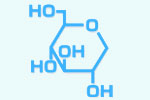14.1,5-AG and diabetic complications.
There is not enough number of long-term large-scale study.
1,5-AG has high correlation with induction of arteriosclerosis related T cells regardless of HbA1c levels (Circ J 71, 962, 2007).
In the cardiovascular field, decrease in 1,5-AG is related to abnormality of cardio-ankle vascular index (CAVI) or pulsatility index. Generally, low 1,5-AG has been shown relation between functional rather than between organic disorders in this field.
Suita study, which follow up the relationship between atherosclerosis and its risk factors for ten years, reported that 1,5-AG was a strong predictor of cardiovascular and stroke risk, especially in men (Atherosclerosis 216, 477, 2011).
It is also reported that 1,5-AG may be an independent marker that predict microvascular complications (Clin Chem 60,1409,2014).
In a range of HbA1c of less than 7.0%, the lower the 1,5-AG level, the higher the incidence of cognitive decline (Diabetes Care 40, 879, 2017). As above, Onji is rich in 1,5-AG, and has been traditionally used as a dementia preventive and an antianxiety agent.
It is expected that 1,5-AG has physiological function. SGLT2 inhibitors may reveal 1,5-AG deficiency disorder independent of hyperglycemia and/or glucose spike.
